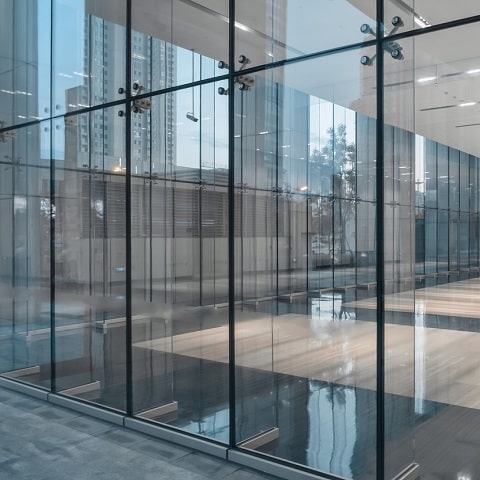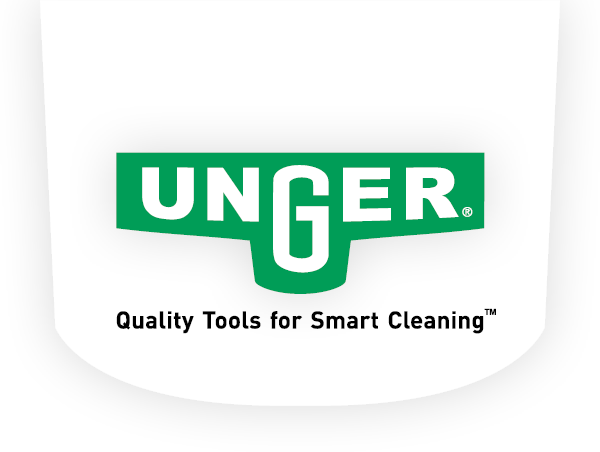NEW! Powerful Nano Filtration with Unger's HydroPower® Nano See The Product

4 Mistakes in Selecting Exterior Commercial Window Washing Equipment
Even though commercial window cleaning can be a profitable business given that you can develop recurring, regular work, some building service contractors (BSCs) still opt to outsource the job to professional window cleaning companies. It’s an understandable decision if you consider the liability and safety concerns, along with the perceived complexity of the job. However, with the latest technology in exterior window washing equipment, anyone can profitably clean exterior glass up to 65 feet without the past safety and liability risks.
The key to success starts with the commercial window washing equipment you use, as it can be a big player in mitigating risks, producing results and satisfying customers. Out in the field each day working with cleaning professionals, we’ve heard first-hand what works and what doesn’t when it comes to exterior window cleaning tools and have developed the following tips on which mistakes to avoid when sourcing your own equipment.
How to Select the Best Exterior Window Cleaning Kit
While COVID-19 certainly has changed the cleaning industry landscape in more ways than one, the rising popularity of all glass buildings and the requirement of more natural light to meet green building standards continue to drive a spike in demand for professional window cleaning, both inside and out. When it comes to exterior window cleaning, avoiding the following mistakes in the tools you use will help you achieve client satisfaction and protect you from the risks associated with traditional window cleaning methods.
Mistake#1: Using Tools and Methods that Use Tap Water
Traditional window cleaning in its simplest form includes a bucket of water, a ladder and squeegee. The problem with this method is that the tap water used as the basis for cleaning is ineffective when it comes to performing professional window cleaning jobs.
Tap water inherently contains impurities, most of which are common and introduced to provide safe drinking water. While safe to drink, you don’t necessarily want to clean with tap water given these impurities. Unless you’re able to remove 100% of the water during the window cleaning process, once the water evaporates, what’s left behind are the impurities – the culprits behind undesirable spots and streaks.
Compare tap water to pure water which essentially contains no damaging minerals or sediments (typically defined as less than 10 t.d.s). When used in window cleaning, pure water, even if 100% of it is not removed from the windows, has minimal chance of leaving any residue behind. Not only does it leave behind no residue, but windows also stay cleaner for longer and the chance of spots and stains causing permanent damage to the glass over time is significantly minimized.
The latest technology in pure water cleaning systems, cleaning kits and waterfed poles is engineered to be portable, easy to operate and extremely efficient, leaving a streak and spot-free result when used properly.
Mistake #2: Assuming You Need to Use Ladders or Lifts for Exterior Window Cleaning
According to the U.S. Department of Labor’s National Census of Fatal Occupational Injuries, falls, slips, and trips increased 11% in 2019. Fortunately, for the window cleaning industry, new technology continues to make the task of high access cleaning safer and faster by keeping professionals firmly planted on the ground, yet we still see ladders and lifts used unnecessarily.
The use of telescopic poles has been popular for decades, however in general, their effectiveness becomes limited above 24 feet given the specialized skills needed to use a pole with a squeegee and washer above this height. Thankfully, today’s telescoping poles have evolved to meet the requirements of this specialized task.
The most advanced pole systems are modular and made of composite materials, such as carbon fiber. Identical pole sections are connected to each other with specialized adapters that allow the pole to remain stiff up to 65 feet while still being light enough for one person to operate. Not only can the task be executed efficiently, but window cleaners can remain safely on the ground while still achieving the same, if not better results.
Mistake #3: Not Upgrading Your Poles
With waterfed poles the traditional way to clean windows with a washer and squeegee is replaced by brushing the window with purified water. The brush removes the dirt from the glass and the water dries completely clean due to the use of purified water. Combine the process with a telescopic pole and windows can be easily cleaned up to 50 feet – quicker, safer and greener than with traditional alternatives.
Investing in waterfed poles to reach these heights reduces labor hours, insurance costs and the need to use other equipment. Waterfed poles are typically available in aluminum and carbon and can keep exterior windows, building facades, signs, etc. cleaner, while keeping window cleaners safer.
Mistake #4: Not Prioritizing Sustainability
The Worldwide Cleaning Industry Association, says “green cleaning is arguably the No. 1 trend in the cleaning industry and is showing no signs of slowing down.” They describe green cleaning as a marketplace phenomenon driven by customer demand and the overall trending of the broad marketplace for environmentally preferable products and services. What this means to professional window cleaners – the old way of cleaning outdoor windows just won’t cut it if you want to remain competitive.
The good news is that the demand for greater social responsibility, eco-friendly products and a commitment to sustainability, is that being sustainable often lowers long-term costs and can increase profits (you may have thought the opposite, right?). By trading in older methods for more eco-friendly pure water cleaning, you can attract dirt and grime with deionized water, eliminating the need for detergents or chemicals that can be potentially harmful to the environment and workers. Using a water-fed pole and brush system, pure water acts a natural detergent and the runoff from the cleaning process doesn’t harm the plants or grass growing at the base of the building.
High Quality Equipment is the Key to Delivering Professional Results
The result of selecting high quality commercial window washing equipment is beautiful, clean windows and customer satisfaction – the ingredient for a profitable business and a healthy, clean facility. Whether your goals are starting a professional window cleaning business, bringing exterior window washing services in-house or optimizing your current cleaning practices, we recommend you start by evaluating the commercial cleaning tools you use and keeping the above considerations top of mind.
Contact Us to Discuss Your Exterior Window Cleaning Needs or to Schedule a Product Demonstration of the Latest in Commercial Window Washing Equipment
